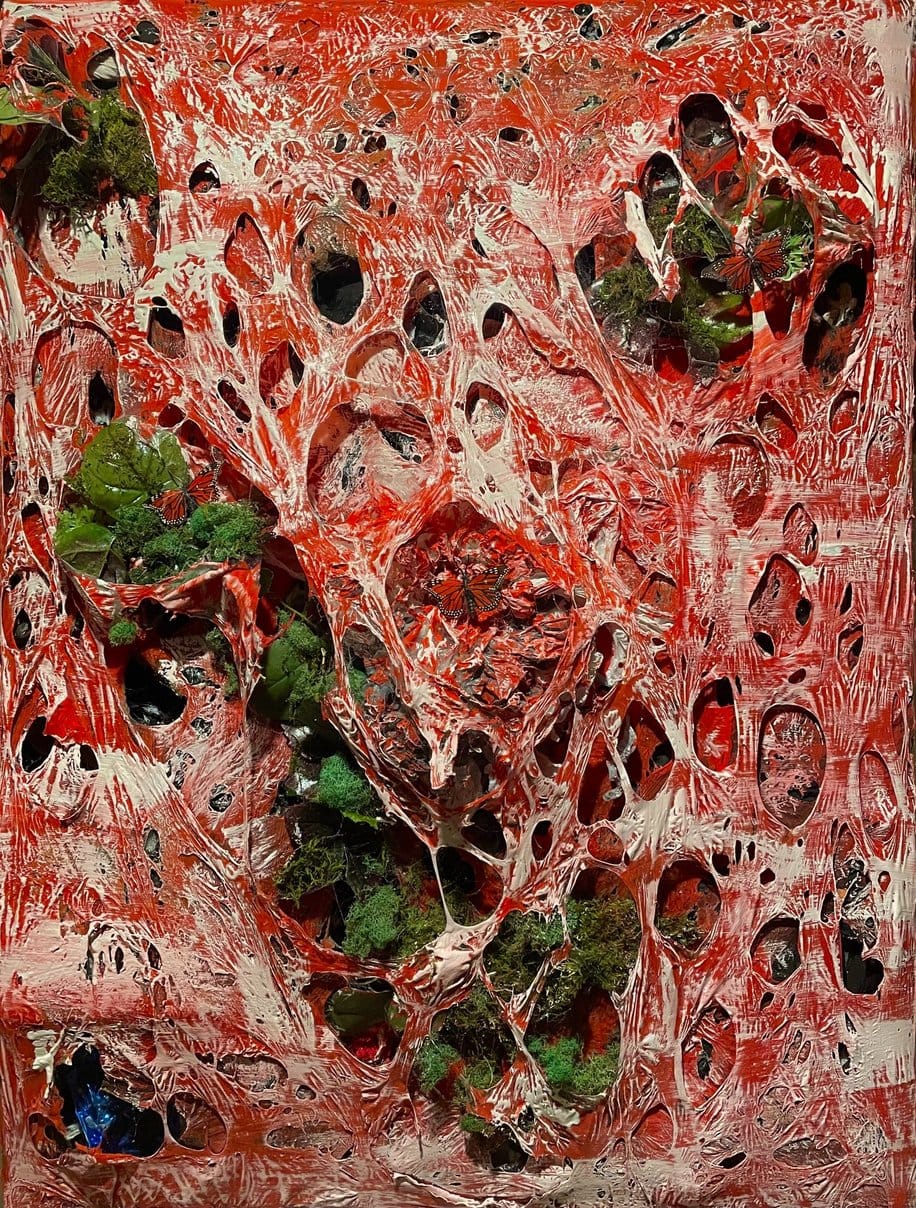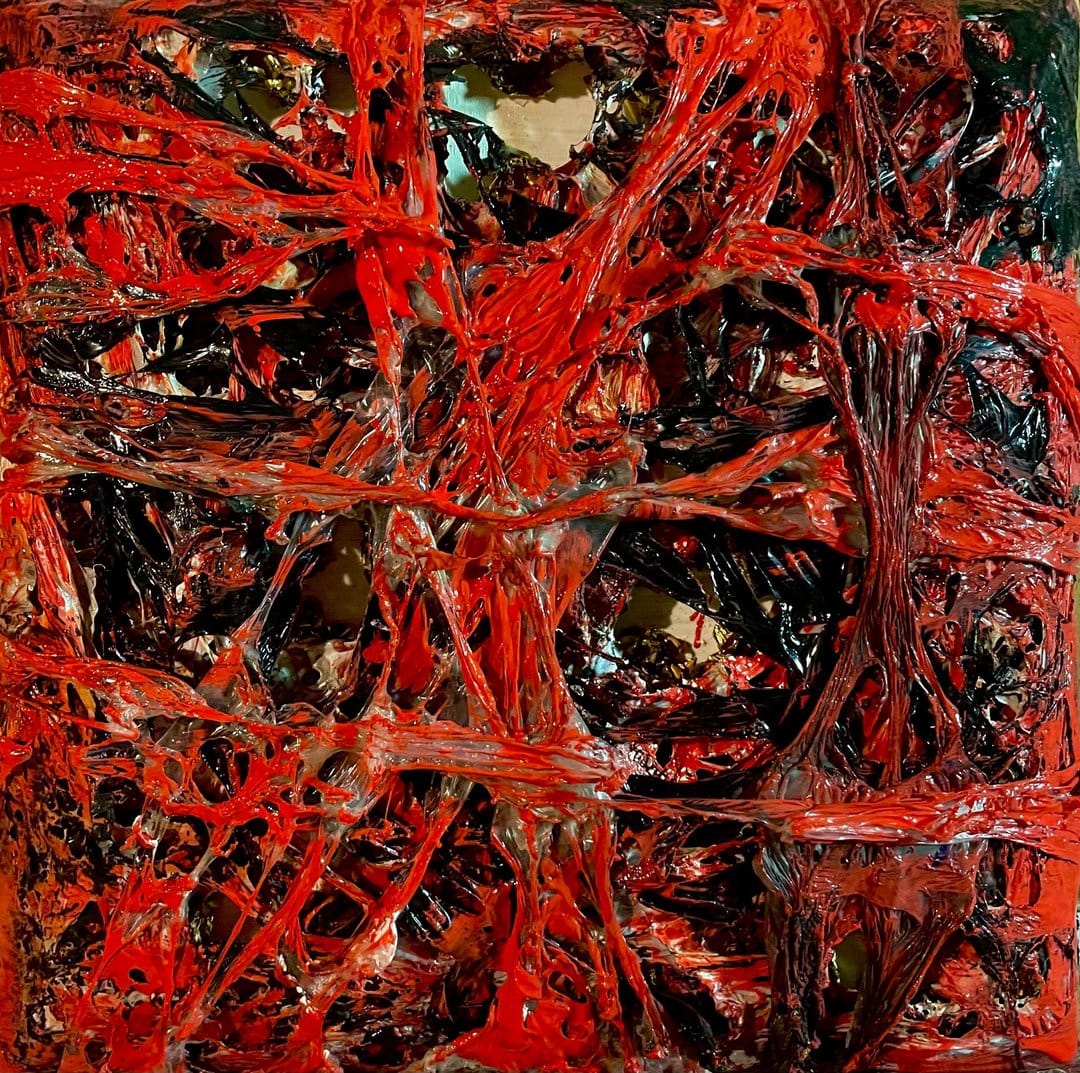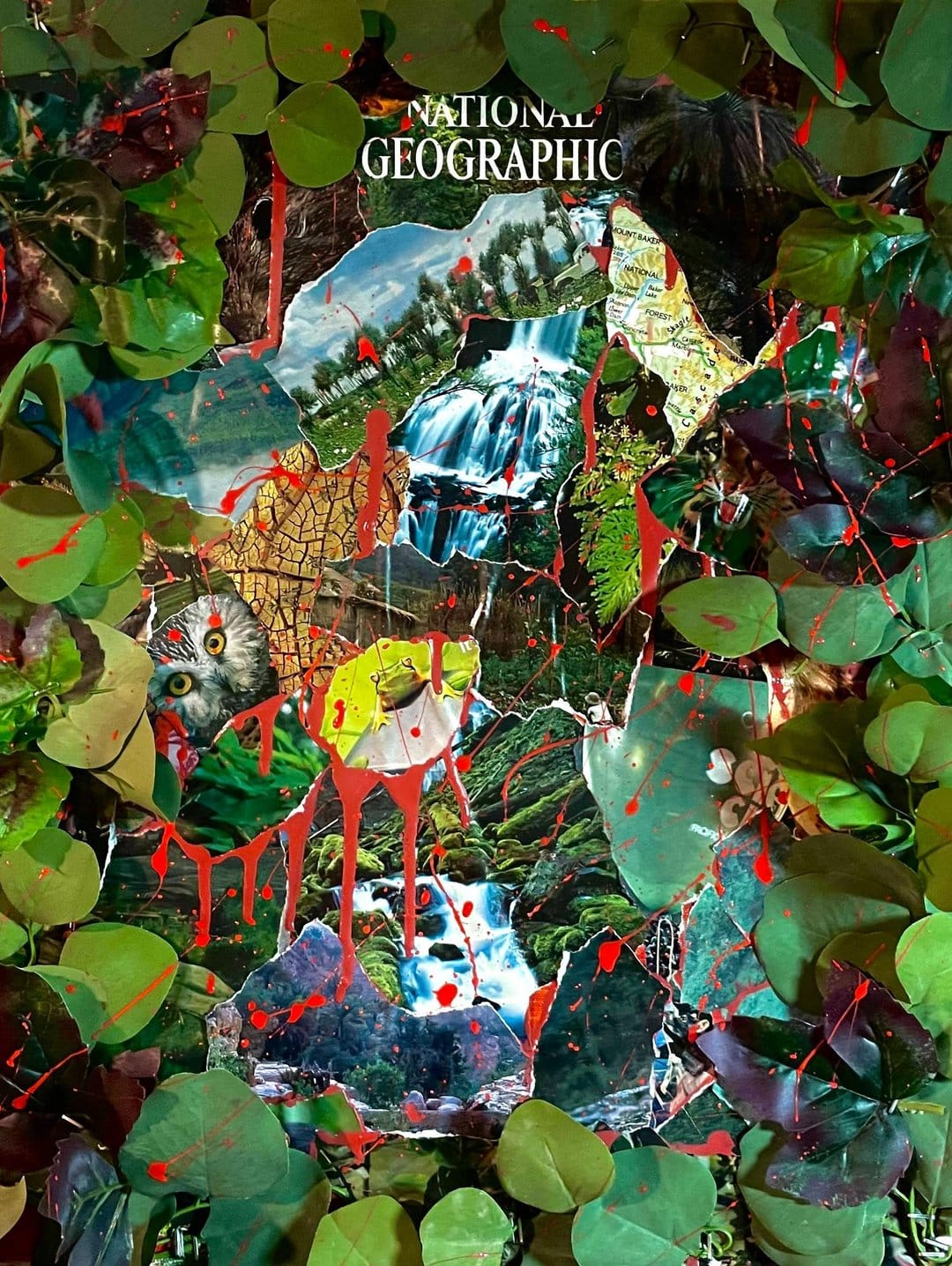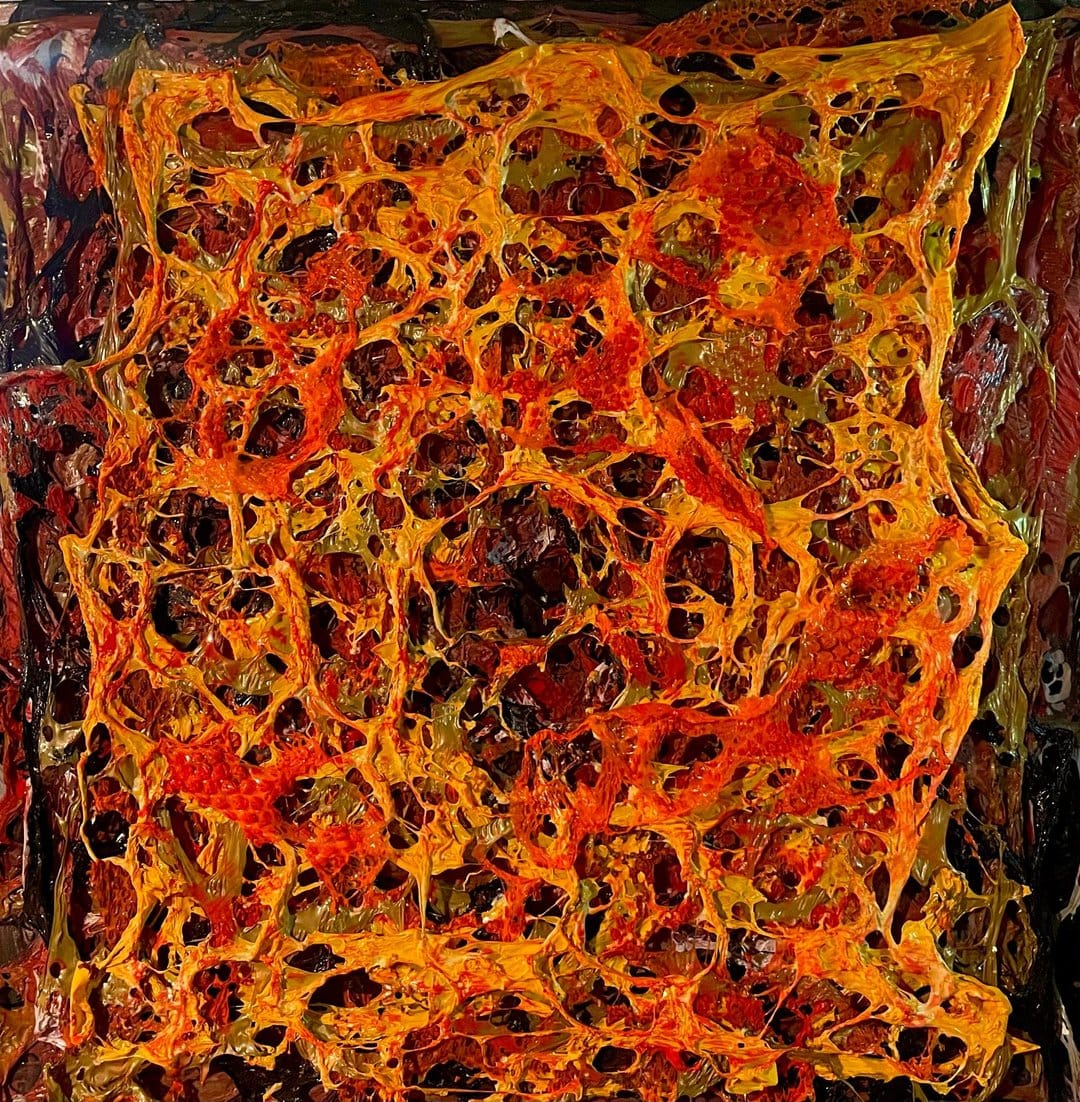Gray d’Éon creates abstract paintings by attaching and forming recyclable cellophane onto canvas. She then takes a blowtorch to the layered plastic and creates a porous structure resembling an ant’s nest. Within all the plastic layers, d’Éon attaches little paraphernalia such as plastic leaves, ornament butterflies, magazine clippings and various other packaging trash.

d’Éon calls her pieces “filth” and explains that in today’s society that aspires to be “clean,” as seen by the preference for machine-cut precision, her pieces are about reclaiming her humanity and affirming her connection with the nature around it. Her pieces signify her efforts to distance herself from consumer culture, which can be seen by how she takes its remnants and churns them out into anti-consumerist pieces. This is why abstract paintings by Gray d’Éon are relevant to the United Nations Sustainable Development Goal of Responsible Consumption and Production.

d’Éon’s pieces are dominated by red as if alluding to how plastic waste is costing real-life blood in the world. The World Wildlife Fund (WWF) noted that plastic pollution kills 100,000 marine mammals annually. A study published by the American National Library of Medicine (NLM) also found that human blood now contains 1.84 - 4.65 μg/mL of microplastics, making it a strange part of everyday life that should not have been the case.

Aesthetically, d’Éon’s pieces follow in the footsteps of twentieth-century Italian artist Alberto Burri, who also created abstract paintings and sometimes would layer on cut, crumpled, and burned materials such as plastic and oil on them. However, Burri’s pieces were about the pure exploration of his materials, poking into their organic decay and how they react to hazardous destruction without much care for socio-political or environmental context as d’Éon’s pieces are.

Gray d’Éon's abstract paintings serve as a poignant critique of human consumer culture and its devastating impact on nature. By transforming discarded plastic and packaging waste into layered, textured artworks, d’Éon challenges the aesthetic norms of cleanliness and precision and underscores the environmental cost of our throwaway society. Her work, steeped in anti-consumerist sentiment, highlights the pervasive presence of plastic in both the planetary ecosystem and the human body, urging viewers to reflect on their role in this crisis.
Find out more about abstract paintings by Gray d’Éon on her website www.graydeon.com or Instagram @grays_trash.
